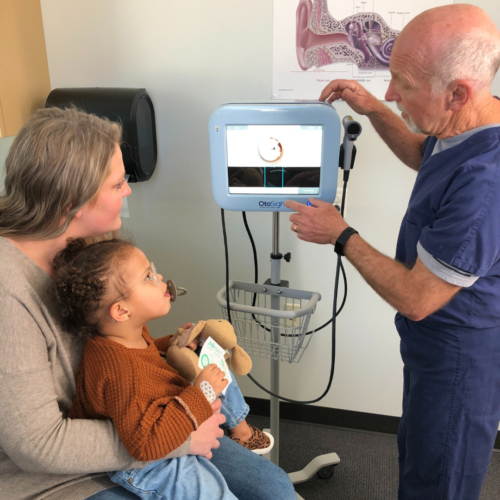Phone
866-411-EARS
Address
PhotoniCare Inc.
2800 Meridian Parkway, Suite 175
Durham, NC 27713

Your local pharmacist just filled the prescription for antibiotics to treat your child’s Acute Otitis Media (AOM) infection…ever wonder how those antibiotics work?
First, a little background. Antibiotics are used to treat bacterial infections. Some antibiotics are highly specialized and are only effective against certain bacteria. Others, known as broad-spectrum antibiotics, attack a wide range of bacteria. Unfortunately, they may also attack some of the native, good bacteria too – so as we learned in a previous post, it’s imperative to be a good Antibiotic Steward.
How Antibiotics Target Bacteria
There are two main ways in which antibiotics target bacteria. They either prevent the reproduction of bacteria (bacteriostatic), or they kill the bacteria (bactericidal), for example, by stopping the bacteria from building their cell walls.
3 Common Bacterial Pathogens in AOM
The most common bacterial pathogens in AOM infections are Streptococcus pneumoniae, Hemophilus influenzae, and Moraxella (Branhamella) catarrhalis. These three organisms are responsible for more than 95% of all bacterial AOM cases. Each one of these bacteria have a cell wall and are commonly treated with Amoxicillin.
Amoxicillin is a penicillin-type antibiotic in the beta-lactam class, and it works by preventing the formation of the bacterial cell wall. However, to kill Strep. pneumoniae, a high dose of amoxicillin is required and even at a high dose, both H. influenzae, and M.catarrhalis are often resistant due to production of an enzyme called beta lactamase that inactivates amoxicillin. Therefore, healthcare providers may prescribe amoxicillin combined with a second ingredient to neutralize the beta lactamase enzyme, such as amoxicillin/clavulanate (Augmentin), or a cephalosporin-type antibiotic, such as Cefdinir.
So now you know how the antibiotics chosen to fight the infection in your child’s middle ear work – by preventing the formation of the bacterial cell wall (amoxicillin) and by neutralizing bacteria resistance mechanisms (augmentin and cefdinir)! Good to know the next time you’re discussing AOM treatment plans with your child’s healthcare provider.

The COVID-19 pandemic has created numerous challenges for parents. Navigating… Read More

PhotoniCare sits down with Dr. Michael Novak, an Ear, Nose… Read More

This week on the #EnginEarGuys blog we talk about otolaryngology… Read More